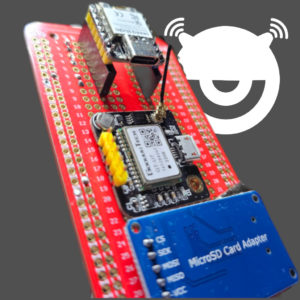
Photo: keith hanson
Shreveport’s former CTO launches digital divide mapping business
10 May 2023
by Sarah Wray
Keith Hanson, the former Chief Technology Officer for the City of Shreveport in Louisiana, has launched a new company, BroadbandThing, to help cities map their digital divide quickly.
It is based on the innovative approach he took in Shreveport – where he developed a tool that detects Wi-Fi signals and sent the devices out strapped to city garbage trucks to map areas with high and low levels of internet adoption.
With this data, which can be gathered in weeks, Hanson says cities can better target their investments.
The company’s co-founder is Shreveport’s former Assistant Chief of Police, Marcus Mitchell, and former Mayor Adrian Perkins is on the board.
Hanson has improved the equipment and is offering a “white glove service” for other cities, including the devices, support, and mapping data.
“Right now is the time to start building all this data and challenging what served and underserved looks like in your city,” says Hanson, particularly as cities are allocating or applying for federal funds and grants for broadband.
Access vs. adoption
Many cities homed in on the digital divide during the pandemic, but this was already a key focus for Perkins when he took office in December 2018.
Hanson discovered early in his city role, which he held from January 2019 to December 2022, that the digital divide was more complex than “where the wires are”. On paper, access was widely available, but he knew from his own observations and feedback from the community that there was a digital divide in Shreveport.
“We had a lot of very qualitative information, not a lot of quantitative, and so that was hard to deal with,” he told Cities Today.
Although steps are now being taken to improve the Federal Communications Commission’s broadband maps, at the time they were “terrible”, Hanson says. The Census Bureau’s American Community Survey (ACS) also provides periodic data on internet adoption but only polls around one in 38 households. Other options such as city-commissioned surveys can be slow and expensive. In addition, internet service providers didn’t want to share where they had fibre, so Hanson thought outside the box.
“You only have to take a small logical leap to say: if there’s Wi-Fi there, there’s an internet connection there,” he says.
Hanson programmed inexpensive Raspberry Pi microcomputers to scan for publicly broadcast service set identifiers (SSIDs), or Wi-Fi networks, and log their locations using GPS. With permission from the city’s legal team, he strapped the devices to garbage trucks for a month.
“Garbage trucks are still the most innovative things and I hope to see more technology on garbage trucks,” he says. “Name me another fleet vehicle that goes down every street that citizens live on every week.”
The tool produced a detailed map of streets with Wi-Fi and those without.
“The data lined up exactly with all of the socio-economic factors we expect,” Hanson comments, with less dense coverage in lower income areas.
“That told us, at least by the data, that this was an affordability problem,” he says.
This was backed up by interviews with people to find out more about their internet needs, preferences and hurdles. While some residents were not aware of federal broadband subsidies such as the Affordable Connectivity Program, others had concerns around trust, being tied into a contract, the quality of their existing service, and other issues.
Turning data into action
Hanson wanted to build out middle mile fibre in the city to lease to internet service providers and spur competition – starting in the most in-need areas. However, the bond was voted down twice.
He thought again. With a limited budget of around US$2.5 million, Hanson says: “My goal was always the same: take whatever dollars I have and find out as much about the problem as I can. If I invest one dollar in an area, it should have more impact than the 90 other things I could have done with that dollar.”
He saw from the mapping data that the areas with the biggest gaps all had a library nearby. The city partnered with Shreve Memorial Library to provide library cardholders with access to free home internet using a newly created CBRS cellular network, riding on the libraries’ existing fibre.
Improvements
The Wi-Fi mapping tool at the time was somewhat hacked together to get the job done. Now it has been streamlined and updated, integrating an ESP32 microcontroller, a GPS module and an SD card. The ESP32 replaces the Raspberry Pi as it gives better readings as well as being cheaper, low power and easy to source. The devices can be attached to city vehicles with magnets.


Hanson says he’s offering a low cost “procurement-friendly” service for pilot cities, providing the devices for around two weeks, overseeing the deployment, and delivering detailed mapping data for each neighbourhood.
“Every urban CIO that I’ve ever met knows that [internet] adoption is the main issue and so we can start showing that in our cities,” he comments. “Yes, we do have wires. No, they are not good enough and they’re too expensive — even with subsidies. We need other things to help that and if we’re showing that with data, I think people will start listening.”
Hanson is working on scaling device production as well as potentially adding new sensors, including for other radio signals such as cellular and CBRS.
He also has another business underway that he’s in the process of raising venture capital for.
“I built decentralised open-source public safety pole cameras while in government for very affordable costs. This company is taking that to the next level and creating deterrent-focused solutions using the same technologies,” he says.








